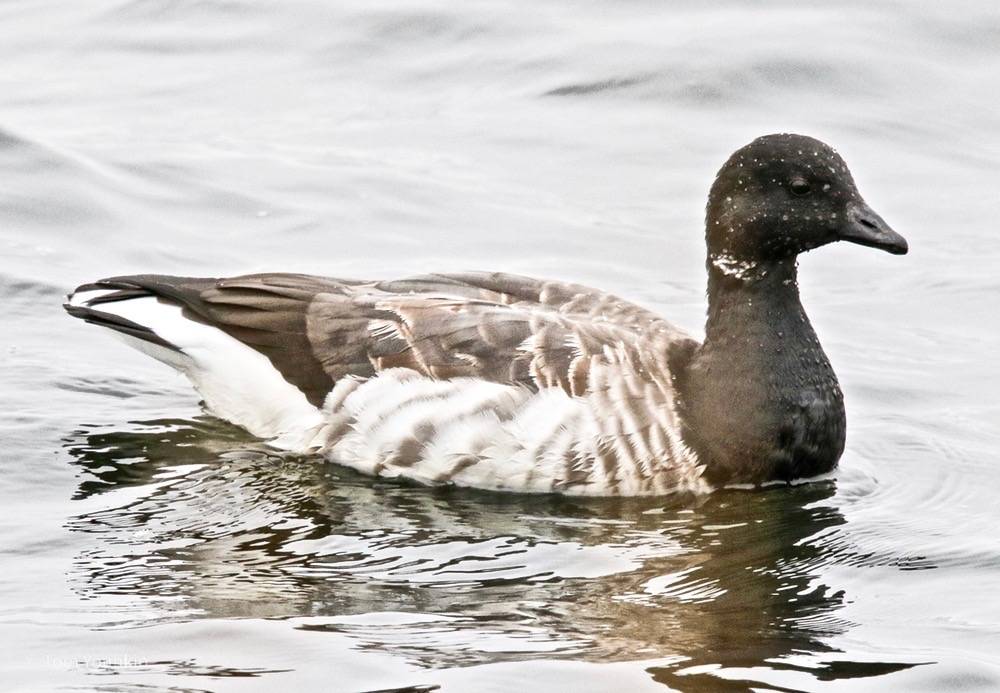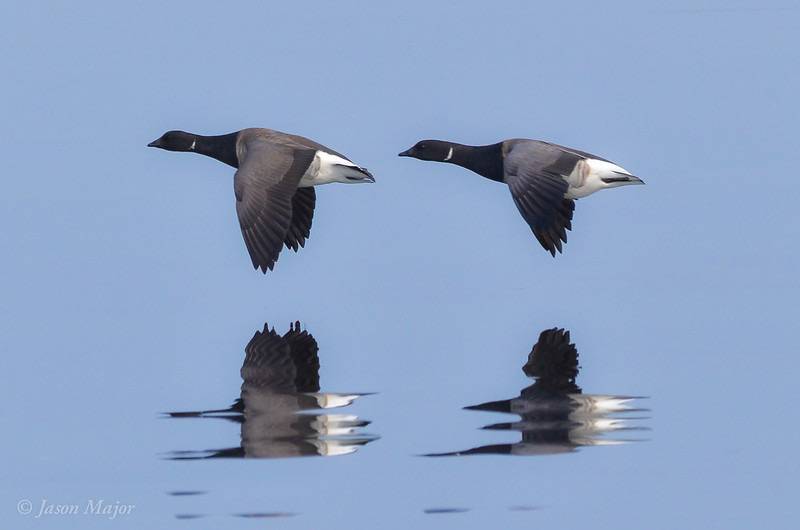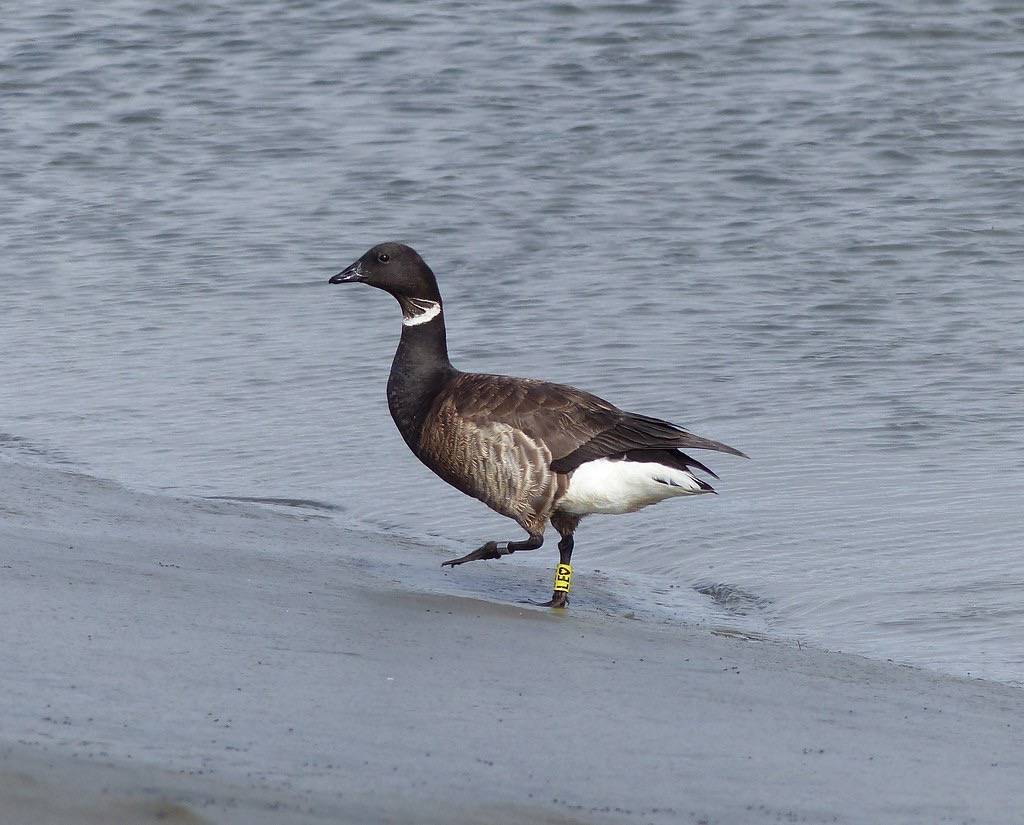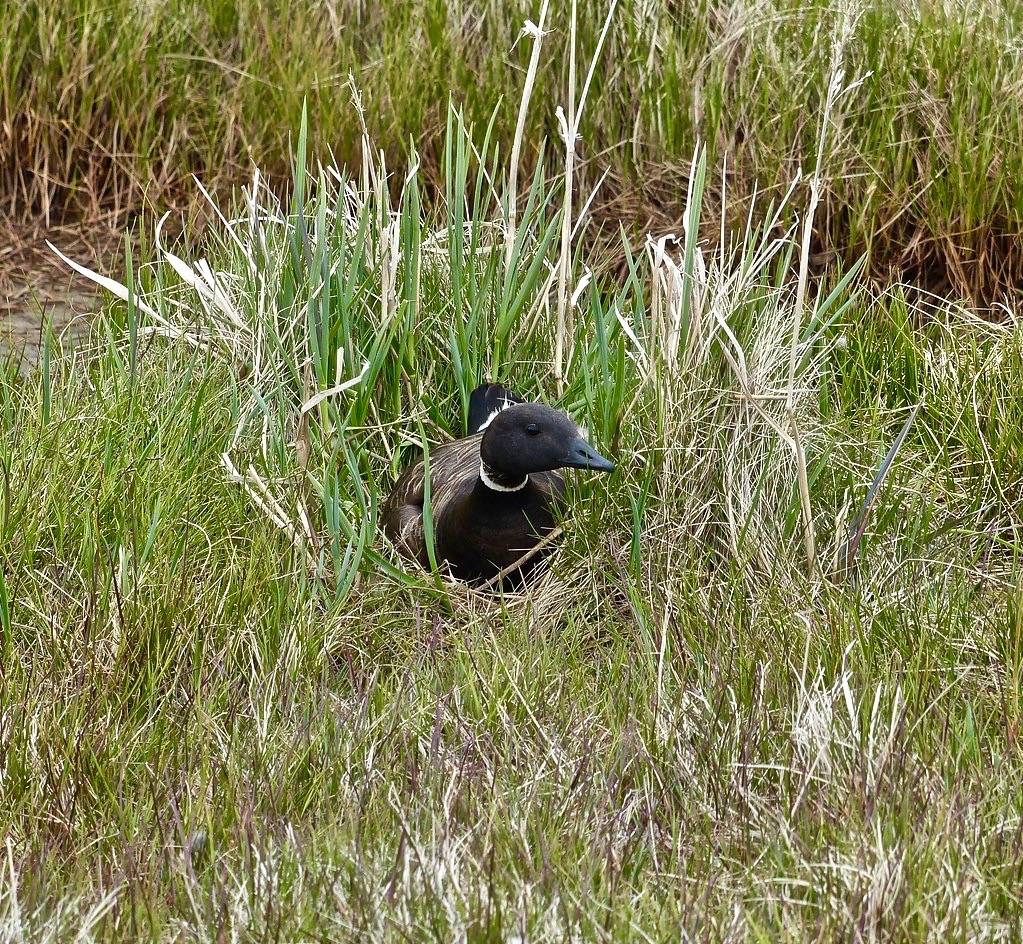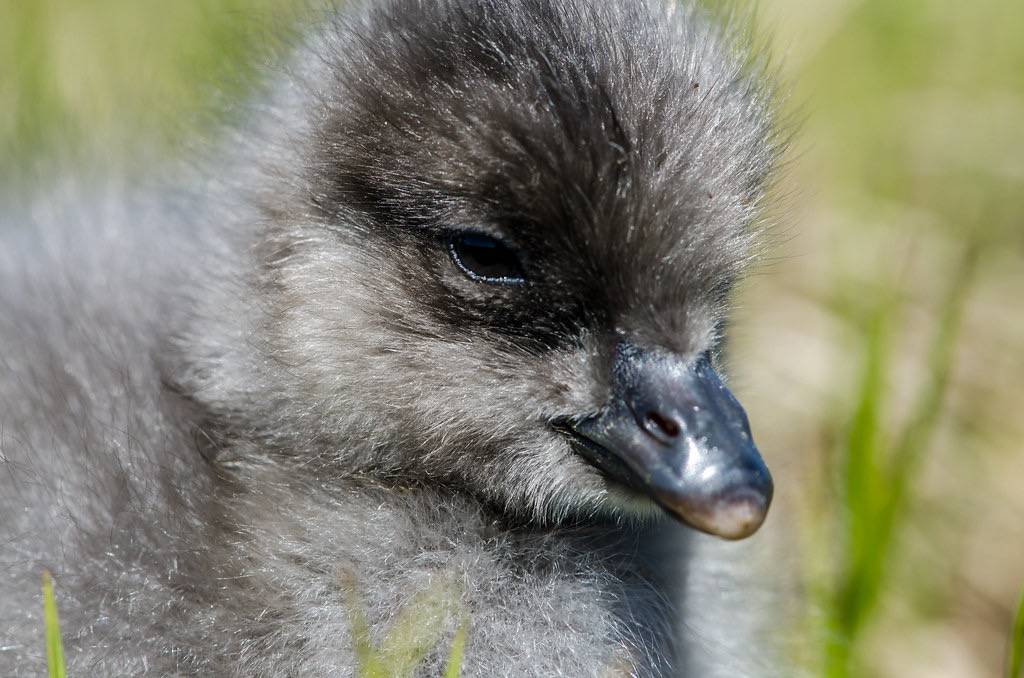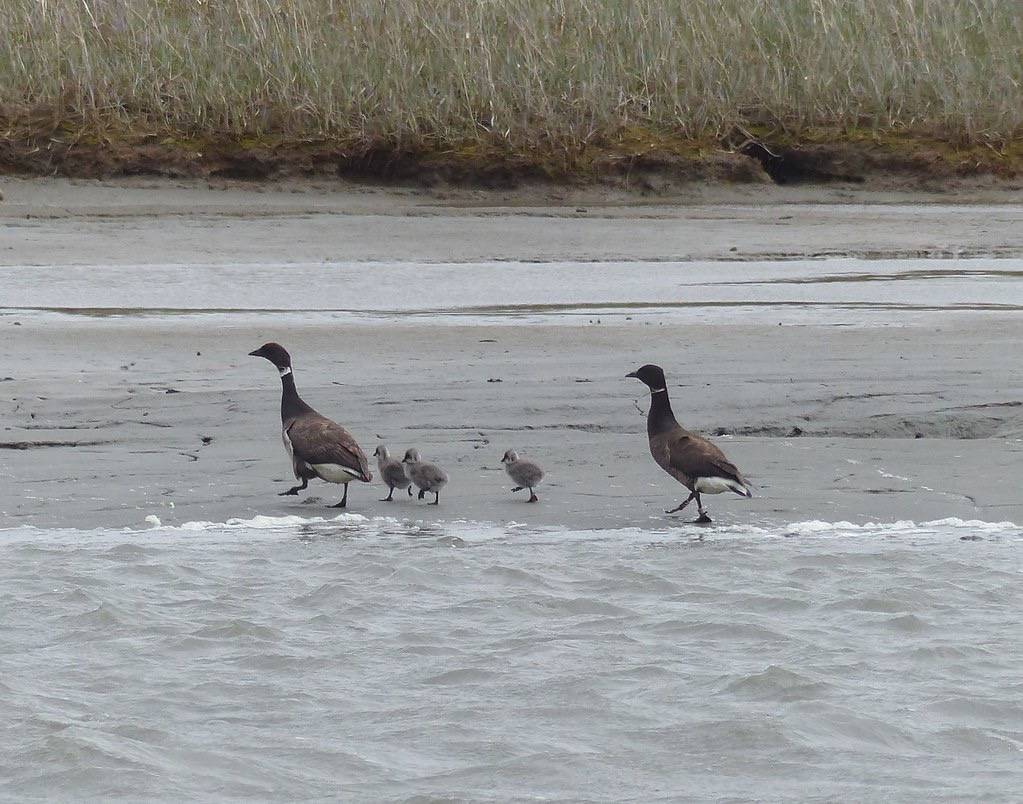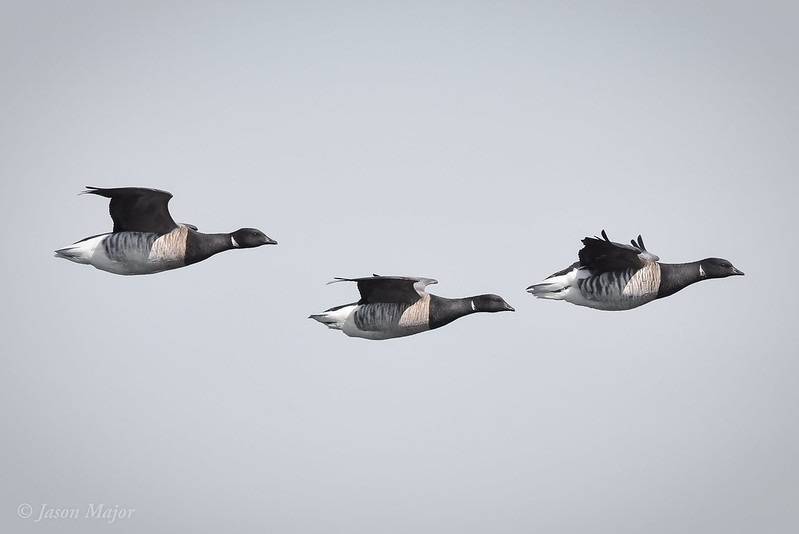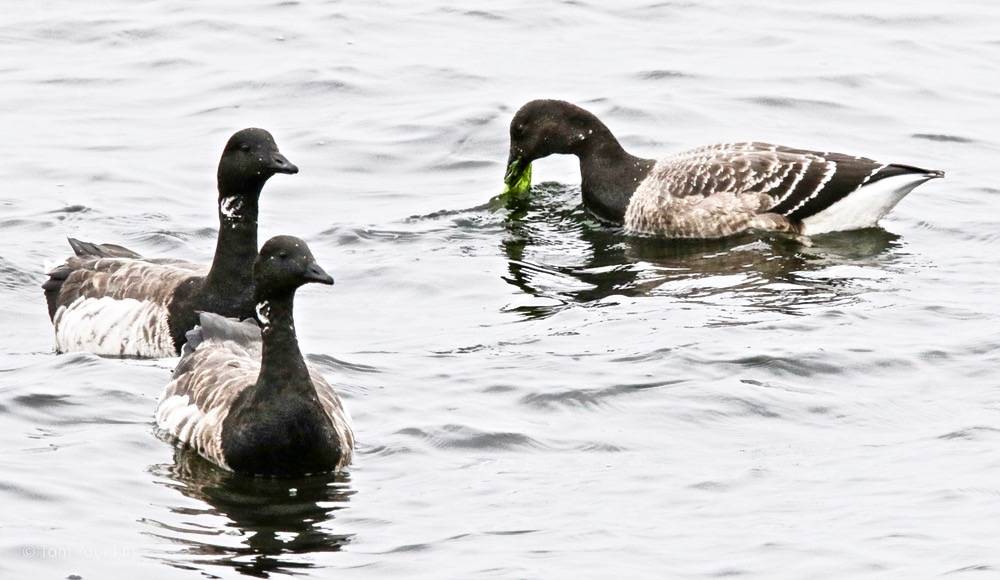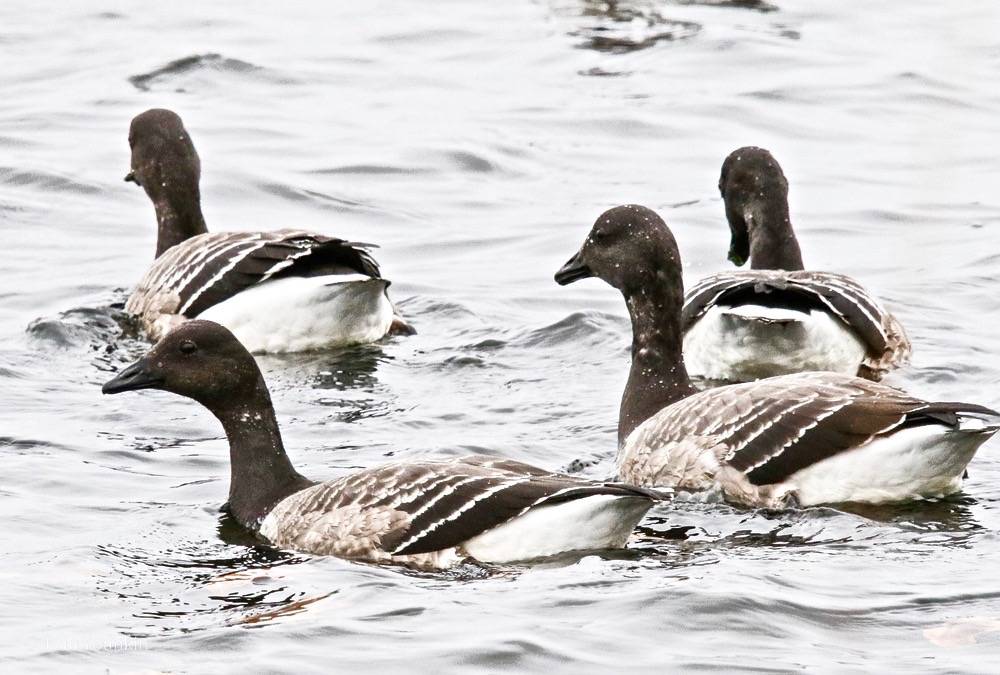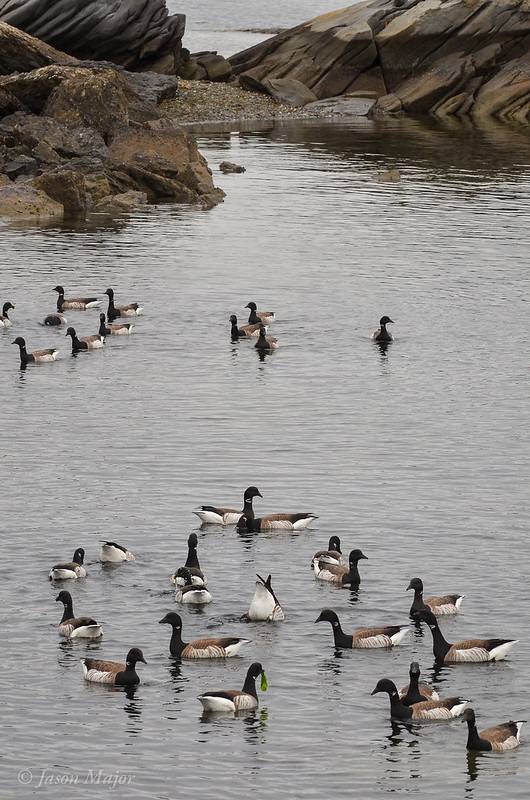Brant
Should you ever happen to see a few Brants in either North or South Cove, just look a bit further because there are bound to be many others in the vicinity. When they are present at Salter Grove, they usually occur in large rafts. In particular, they like to congregate amongst the rocky islets at the southern end of Rock Island.
Unlike the other waterfowl that winter quietly in the coves of Salter Grove, the rafts of Brant can be quite noisy. At a distance they can sound like a social gathering of humans having very animated conversations.
The Brant is a small goose not very much larger than a Herring Gull. The hundreds and perhaps thousands that pass through the park each fall and winter will have flown thousands of miles from their breeding grounds somewhere in the wet coastal tundra of Alaska and Canada.
Historically, its preferred food is eel grass which was decimated by a blight in the 1930's. Its ability to switch to other aquatic plants such as sea lettuce brought the Brant back from the brink of extinction.
Although primarily wintering in estuaries, it has learned from other geese species to feed on grasses and winter cereals in agricultural fields further inland. Its herbivorous diet is supplemented with aquatic insects, mollusks and worms.

